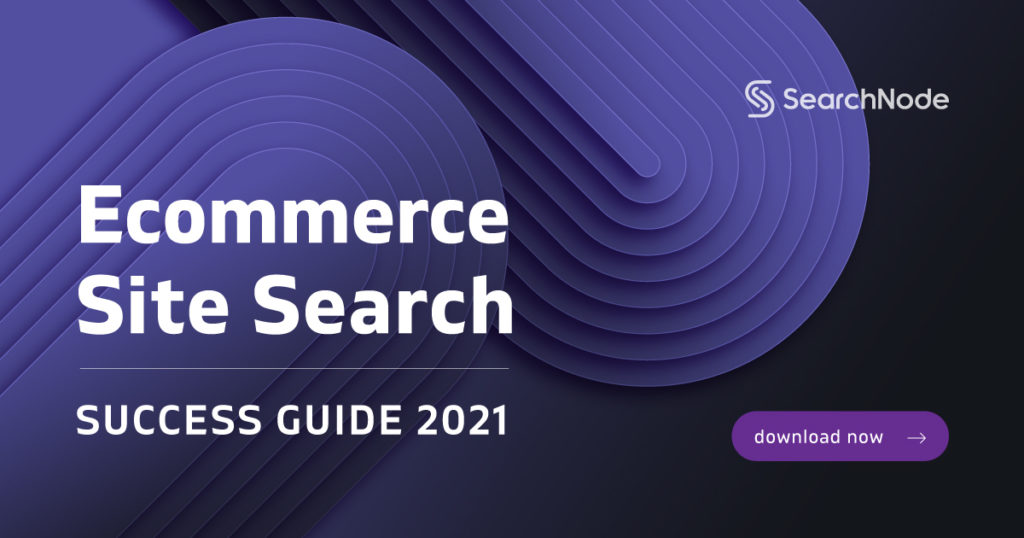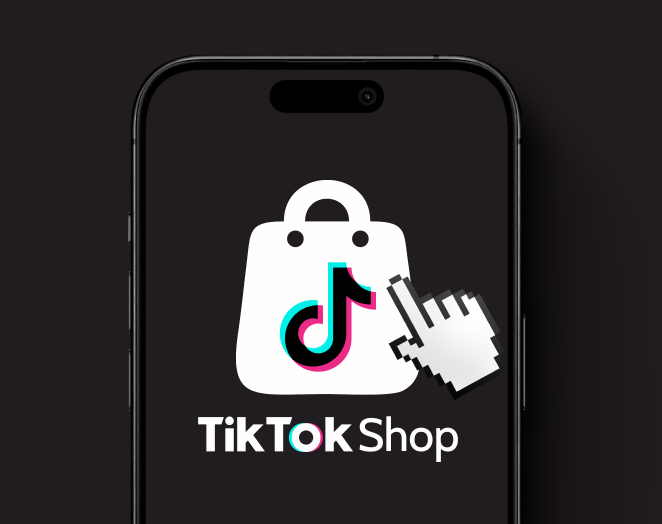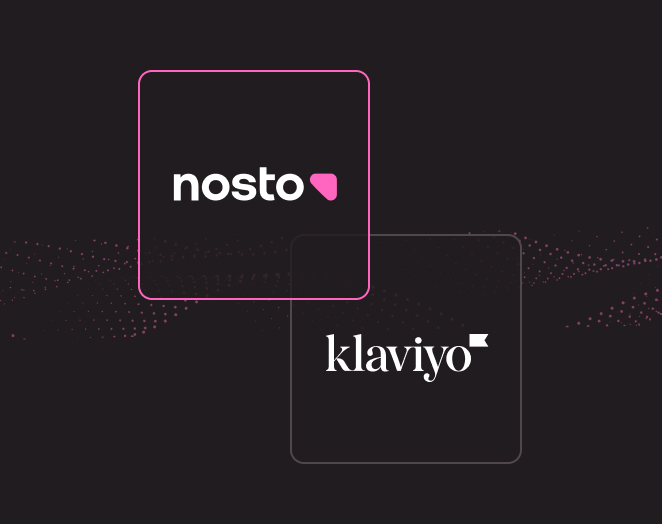Searchandising (Search Merchandising): What It Is?
Searchandising is a relatively new term, which emerged together with the rapid improvement of eCommerce search solutions. This article covers what it is, why it is important, and how to earn more by using advanced search merchandising techniques.
Imagine for a moment that you owned a brick-and-mortar retail store. You’ve got some languishing inventory that you need to move quickly, and you’re not afraid to slap on some discounts and make the items more noticeable to customers from the moment they walk in.
In the retail world, this is known as merchandising.
We’re surrounded by merchandising every time we shop. Bright, attractive displays and vivid, colorful sales announcements beckon us to spend. But can this same concept be adopted for online use?
Ecommerce websites take many of the same cues from the traditional shopping experience. They often announce sales with stunning vivid image carousels or large calls-to-action. But when it comes to searching a site for a specific product, those banners and buttons can’t help you. But search merchandising (searchandising) can.
What Is Search Merchandising (Searchandising)?
Search merchandising is the ability to custom tailor your eCommerce site search results to fit the criteria you set. By using smart searchandising techniques, not only can you ensure that the results are relevant, but that they also highlight the things you want users to see and act upon, such as trending products, seasonal items, related products with higher profit margins, and so on.
Search + Merchandising = Searchandising
Why Is Searchandising Important?
Nowadays, probably no merchant doubts the importance of fine and optimized eCommerce site search solution. Users want to have natural shopping experiences, and providing them with relevant results is one of the key success factors in eCommerce. But one thing is to provide users with just relevant results, and another one is to provide them with relevant results that you want them to buy (e.g., displaying a relevant product with a 40% profit margin, vs. 80%).
For a modern eCommerce solution is unforgivable to provide irrelevant experiences, as well as not provide advanced merchandising features. Search and merchandising are two pieces of the same pie. If joined together correctly, searchandising serves both – users’ and merchants’ best interests.
It’s not enough to provide users with just relevant results; you have to provide them with relevant results that you want them to buy.
How Does Search Merchandising Work?
Just like traditional retailers merchandise items to move stock or highlight sales, so too can online retailers merchandise their search results to emphasize trending products, seasonal items, and products with higher profit margins — while still retaining relevancy.
There is no “one size fits all” approach for every retailer, which is why it’s best to work with your site search provider on customizing your results so that they can be optimized according to the criteria you set. Like many other facets of running an online business, your eCommerce search is not set up with a “once and done” strategy. It needs to be monitored and adjusted as the system learns from your input and that of your shoppers.
It’s best to approach your search platform vendor with a search merchandising strategy. Together you can define which algorithms make the most sense from a business standpoint. The goal is to incorporate things like seasonality, trends, and other factors into your search merchandising strategy. Then you will be able to import these custom algorithms into your site search while monitoring and adjusting the results as needed.
The results must be scalable as well. So whether you sell 50 products or 500,000 products, your site search must proactively demonstrate that it can return relevant, accurate results in seconds.
Three Steps To Execute Advanced Searchandising Process:
- Understanding business priorities and strategies – knowing the business’s general functions and its goals will allow you to better align your search results with the key indicators that matter most to you.
- Defining ranking/merchandising factors – This is where specific results come into play when a search is conducted. Common data points incorporated into the algorithms include the number of sales in a certain period, product availability, profit margin, click-through rate, discount percentage, seasonality, product release date, items stock, etc.
- Implementing relevant algorithms and monitoring performance – Once the pertinent algorithms are defined, it’s time to integrate them into the system and monitor their performance, watching for possible improvement areas.
Of course, you can’t just implement a certain formula and call it done. The best site search solutions continue to learn and apply what they’ve discerned about your target audience. Here’s what to look for before you decide:
The Four Layers of Advanced Searchandising:
- Relevance In Search Results
- Personalized Searchandising
- Business Rules For Proper Search Results Ranking
- Automated Searchandising That Continues To Learn And Improve
The site search algorithms do much of the heavy-lifting, so much of your freedom and flexibility (or, conversely, your constraints) will be limited to what your chosen platform can accomplish.
Whether you’re in the market for a better eCommerce search solution (one which allows for full searchandising of results), or you’re looking to start right with a robust, intelligent site search, you must choose the solution that incorporates these three layers in its ranking system, when thinking about search merchandising:
1. Relevance In Search Results
Having the most merchandisable search in the world won’t do you any good if the results are all various products on sale — none of which match the user’s intent.
The best eCommerce search solutions understand this on a core level and use it as an advantage in its’ search merchandising. For instance, if I’m searching for a lawn chair, I don’t want to show results for picnic tables, dining room chairs, or other patio furniture, even though all of these might be found in a Home and Garden category in an online store.
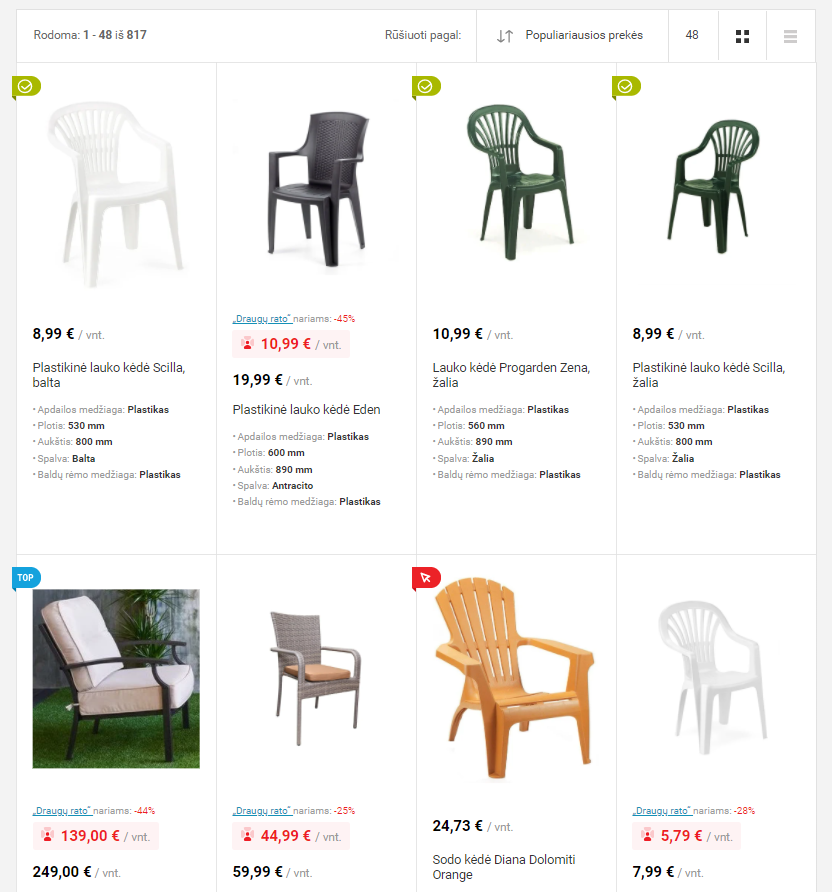
This is why today’s site search engines leverage NLP or Natural Language Processing. Through its ability to mimic but analyze what we say, the search is smart enough to discern the intent behind it and not retrieve results in broad strokes because that’s what the system “thinks” we want.
Search engines historically followed this pattern of “throw everything at the customer and hope some of it sticks”. But today’s search solutions are more about zeroing in on results with greater focus and more precise targeting. Natural language processing is one of the most vital parts of smart search merchandising.
2. Personalized Searchandising
Relevant results are, no doubt, the most important part of the site search engine. Still, by combining it with personalization, you can expect even greater results, especially when it comes to search merchandising.
By leveraging historical user behavior data, you can bring your search merchandising strategy to the next level. Let’s illustrate this with an example. A customer comes to your online store, searching for smart TV. From behavioral data, you know that the user is into Samsung smart TV’s, so why bother showing them LG TVs, even those with a high conversion rate? The smart thing that search engines should do is automatically retrieve all this data and display properly merchandised search results.
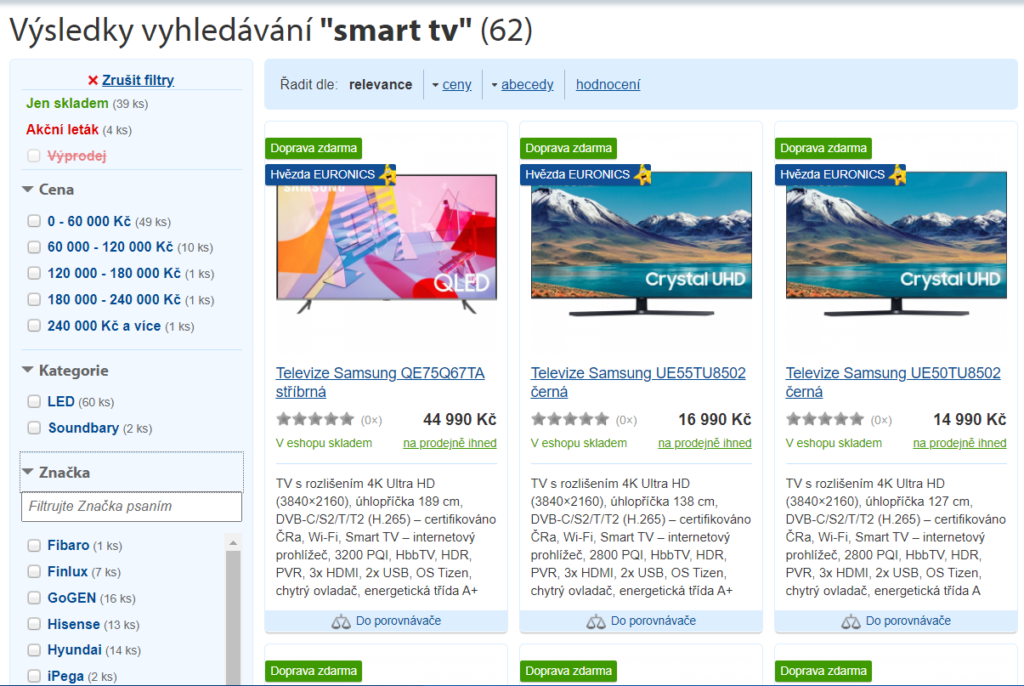
Another personalized approach, which advanced search merchandising solutions should have, is location-based merchandising. For instance, outdoor sports goods providing companies could show gloves for skiing in snowy locations and bicycle gloves in sunny locations when the user is looking for “gloves”. Geography-based merchandising can also serve as an omnichannel strategy by automatically boosting goods nearest to the physical store location, if the customer wants it right and there, or if he/she wants to assess the visual look & feel of the product.
3. Business Rules For Proper Search Results Ranking
No site search solution can intuitively understand all the facets of your business model and merchandising strategy out of the box without a little input from you. To get the best possible results when searchandising, you should determine if your site search provider is willing to help you “fine-tune” the site search for better performance.
Since these performance indicators vary for every business and every business model, the merchant and the search provider will need to work together to determine the proper formula and application of “business rules” for appropriate searchandising.
In short, these rules encompass all of the variables that could affect the ranking of your search results, including things such as profit margin, product availability, discounts, free delivery and shipping options, product release date, and so on.
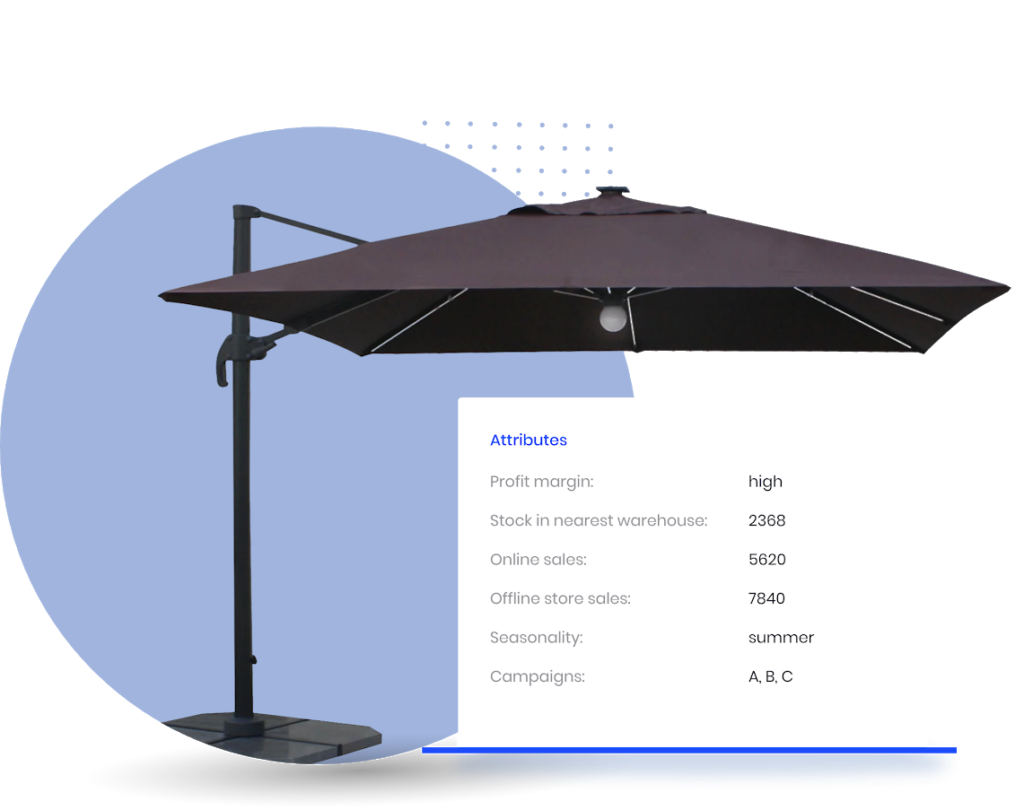
If you were to launch your eCommerce search solution and have it focus on product profit margins to the exclusion of everything else, the results returned might be useful for your wallet but would create a poor customer experience.
With this in mind, it’s crucial that your site search provider is not only willing to work with you to create these specific formulas but also ensure that they can be further refined and optimized based on your own experience and search merchandising strategies you wish to implement.
Example How Fine, Granular Control Over Search Results Impacts Searchandising Results Positively
One of SearchNode customers, a large electronics retailer in Europe, used a similar search merchandising strategy to boost Xiaomi smartphones’ sales. According to their sales analytics, Apple, Samsung, and Huawei were their top sellers, so it would be easy to assume, based on that data, that they should highlight those best-sellers in their search results.
But product popularity does not always line up with product profitability, and Xiaomi smartphones had much higher profit margins. This left the retailer with a search problem – how do they boost the sales of the higher profit margin smartphone without affecting the other three brands’ popularity?
The searchandising solution was to incorporate a custom search algorithm for the merchant that allowed them to boost products in search results across several criteria in a specific order. Of course, this order will shift when new smartphone models are released, but the site search now ranks results based on (in the displayed order):
- Profit margin (highlighting the Xiaomi products first)
- Sales count from the previous two weeks (highlighting the most popular phones)
- Availability (since you don’t want to highlight products that are out or low on stock)
- Discount available
- Release date (the sooner the phone is to be released, the higher its priority in the list)
As a result, sales of the Xiaomi brands of phones increased by 260% – exceeding the retailer’s expectations and their sales goals.
It’s important to note that this retailer has over 150,000 products and generates over 90-million euros per year. As you might imagine, their site search needs to accurately and quickly filter, fetch, and retrieve these kinds of results without impeding the shopping experience.
4. Automated Searchandising That Continues To Learn And Improve
This is the most advanced layer of searchandising and one that continues to be improved and honed to this day. Although not as complex and involved as the third layer, truly innovative site search leverages AI and machine learning algorithms to automate most actions and continue to self-optimize over time. It does this by tracking user behaviors in a way that doesn’t involve any personally-identifying information.
Truly innovative site search leverages AI and machine learning algorithms to automate most of the actions and continue to self-optimize over time.
By continuing to grow and improve, machine learning algorithms represent the very bleeding edge of what today’s search technology can become.
You can think of the third layer as the foundation upon which your customer search experience is built, and the fourth layer as the scaffolding that continues to scale and refine itself through continual learning patterns that change with the insights it gleans from shoppers. This way, you can be sure that your searchandising efforts are not “one-time-thing”, but that they will bring growing results over time.
The Bottom Line When It Comes To Searchandising? Make It Part Of Your Overall Strategy – Not A Standalone Silo
By incorporating search merchandising into your overall strategy, you’re not only much more likely to retain customers but also move inventory, grow your profit margins and create an experience that entices shoppers to come back again and again.
Of course, this is only one of many eCommerce best site search practices you can implement. I invite you to read more and find out what the top eCommerce sites are doing to help attract and retain customers with their robust eCommerce site search solutions.
And if you’d like to see how your site search is performing and whether or not you’re giving your customers the best possible experience on your eCommerce site, click here to get your FREE website search analysis, conducted by Search Experts. This detailed site search analysis will be performed individually for you by a dedicated site search expert. The report is designed to help you understand where users may be falling out of your funnel and help you reach and retain more customers through a smart, powerful on-site search solution.
What best searchandising practices are you using in your eCommerce business? Please, share in the comments section below.
